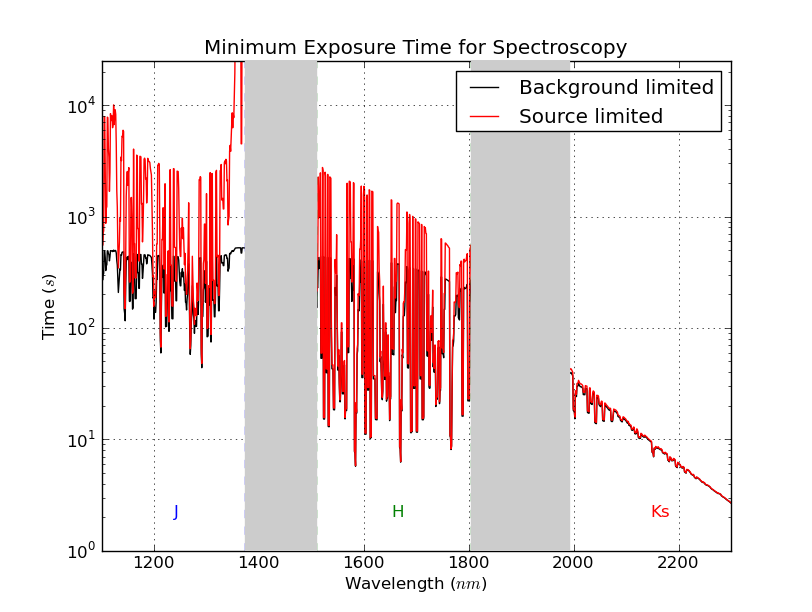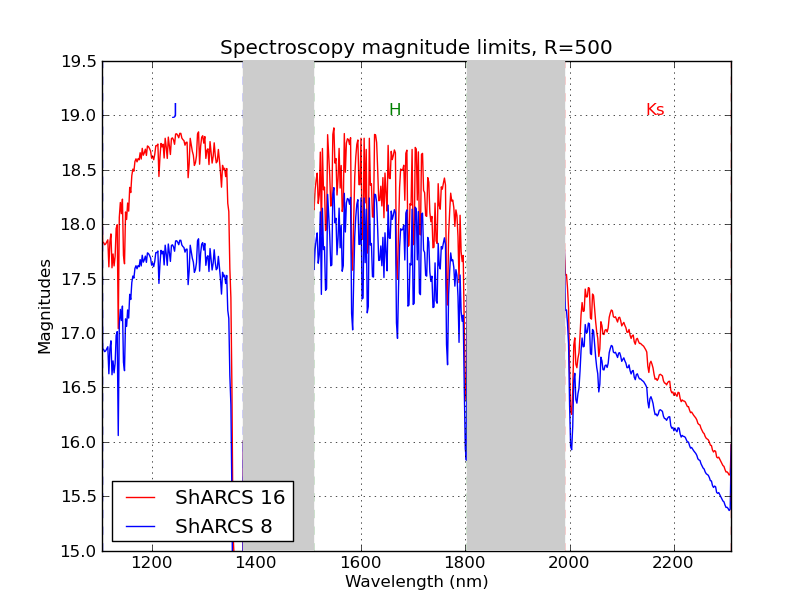Low-resolution spectroscopy ( ) in the new system is expected to be much improved because of long-exposure stability, slit rotation capability, and diffraction-limited, Nyquist-sampled PSFs in all bands. Repeated, reliable co-adds will make it possible to raise SNR and track night sky line variation. The current slit is 100
) in the new system is expected to be much improved because of long-exposure stability, slit rotation capability, and diffraction-limited, Nyquist-sampled PSFs in all bands. Repeated, reliable co-adds will make it possible to raise SNR and track night sky line variation. The current slit is 100  m wide, which represents 24 mas at the detector in the spectral direction. The diffraction-limited disk is currently truncated by the slit in
m wide, which represents 24 mas at the detector in the spectral direction. The diffraction-limited disk is currently truncated by the slit in  and
and  bands.
bands.
Figure 8 shows the minimum amount of exposure time needed to no longer be limited by the detector noise and background noise.
Figure 8:
Minimum exposure time required at each wavelength for sky background and dark current to equal read noise (background limited) and for source flux to equal 2 sky flux (source limited).
sky flux (source limited).
|
 |
Limiting magnitudes in the  bands for spectroscopy with the ShARCS 8 subaperture (the initial configuration) and ShARCS 16 setup are shown in Figure 9
bands for spectroscopy with the ShARCS 8 subaperture (the initial configuration) and ShARCS 16 setup are shown in Figure 9
Figure 9:
Magnitude limits (SNR=5) versus wavelength for point source spectroscopy with ShARCS 8 and ShARCS 16 configurations.
|
 |
Srikar Srinath
2013-10-09

![]() bands for spectroscopy with the ShARCS 8 subaperture (the initial configuration) and ShARCS 16 setup are shown in Figure 9
bands for spectroscopy with the ShARCS 8 subaperture (the initial configuration) and ShARCS 16 setup are shown in Figure 9
